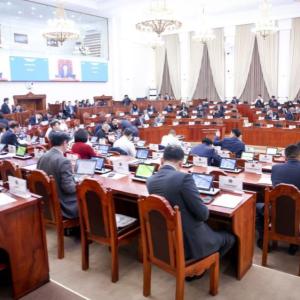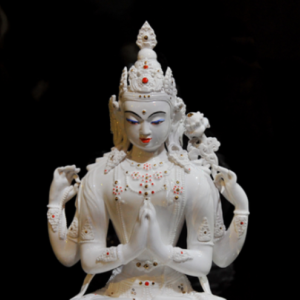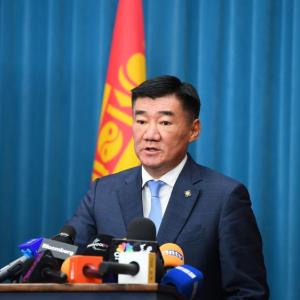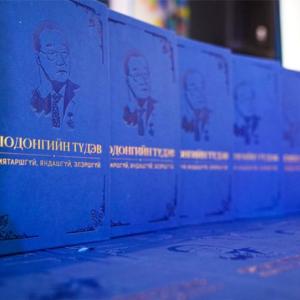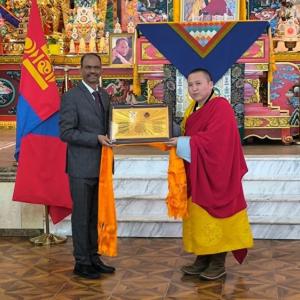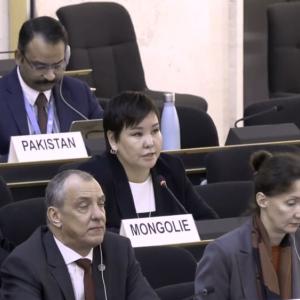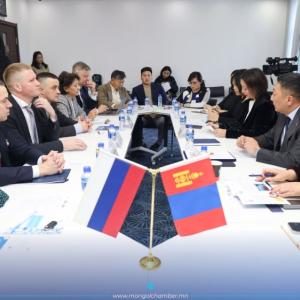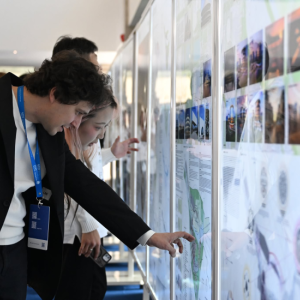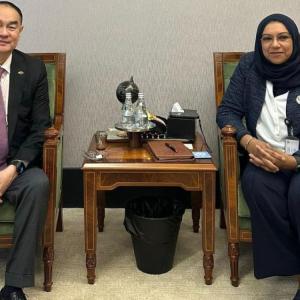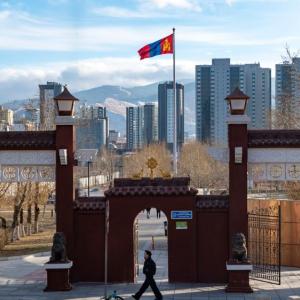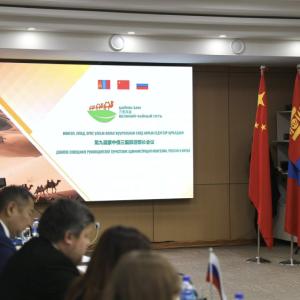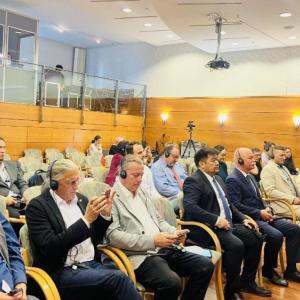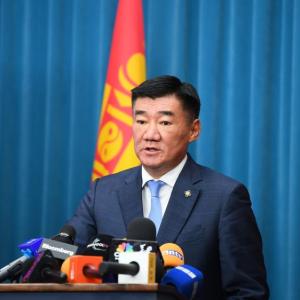B.Turmunkh: I illustrated 60 pieces for the updated version of ‘The Secret History of Mongols’
The Mongol Messenger
Ulaanbaatar /MONTSAME/. We held an interview with illustrator of ‘Jangar’ editorial at ‘Monsudar’ publishing house B.Turmunkh. ‘Jangar’ editorial began to implement a project on ancient literature several years ago, publishing adapted versions of major literary works such as ‘The Secret History of Mongols’, ‘The Thousand and One Nights’, and ‘Geser’ for younger readers in addition with illustrations.
- The editorial published an adaptation of The Secret History of Mongols for children recently. How did the necessity to publish the book come to be?
- Countries of the world developed and “renewed” their heritage with the changing of society. This is an expression of how the core values of their own heritage are properly being utilized. Mongolians have a rich cultural heritage as well.
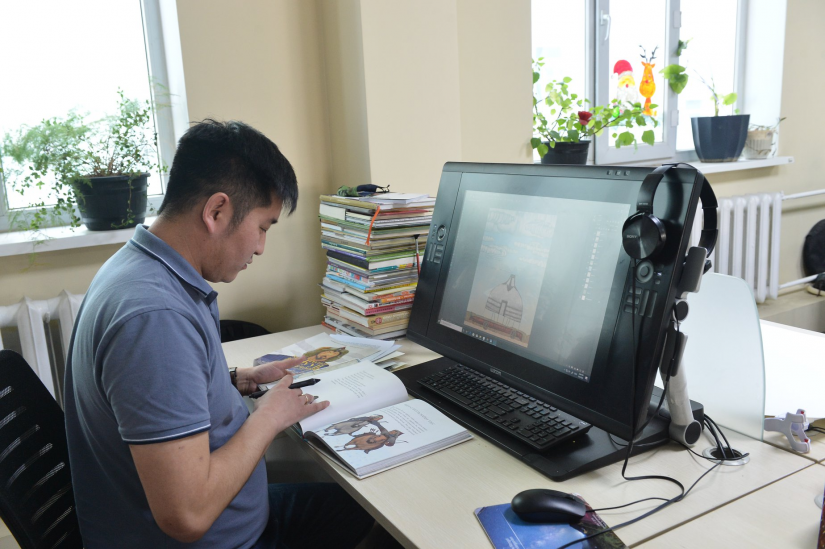
- When did you first become acquainted with the Secret History of Mongols personally?
- I became acquainted with the work very early on. My father V.Batbayar was an author and a poet. In the midst of his collection of books, he had a version of the Secret History of Mongols with fascinating paper-cut imagery that was published by S.Turburam. Although I had really wished to read the book, I remember there being many words and phrases as well as events that I could not quite fully understand. It was most likely purely through sheer will that I finished reading it even if I could not fully understand the events as a child.
- I have been told that you have been drawing illustrations for children’s books for 11 years now. When did you begin to work on illustrations for this book? How long do you think you spent illustrating each theme?
- I began to work on illustrations for the Secret History of Mongols book three years ago. As I worked on them, I was faced with many questions including how should children comprehend the contents of the book, what they would learn from this, and how can the illustrations be drawn in a way that allows children to continue to imagine the events in their minds. To find answers to all the questions, I had to read and study up on all these a whole lot. That is probably why it required a significantly long amount of time.
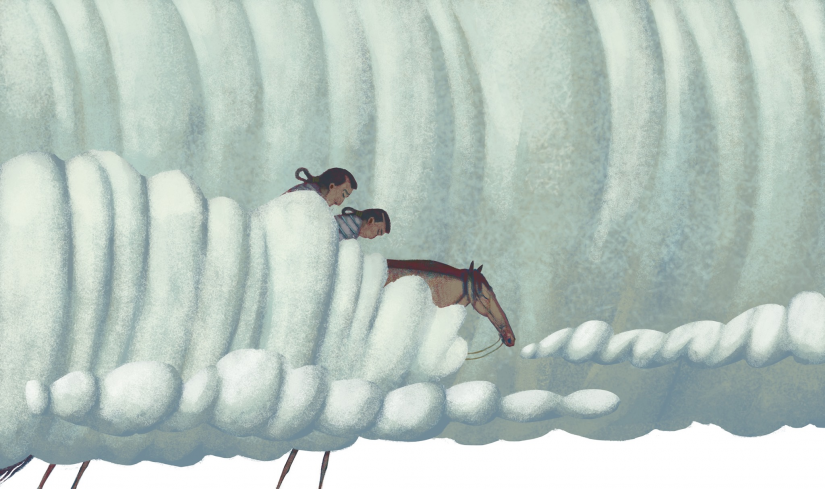
- What age group is the updated version of the Secret History of Mongols intended for?
- Children and youth over the age of 10 should be able to read this book. Around this particular age, children’s imaginations tend to greatly develop - in other words, this is the age when they are able to freely dream. Thus, I did my best to bring the book’s illustrations in a way that is suited for their imagination.
- I have noticed that the illustrations were drawn in many different ways. Some even noticeably featuring characteristics of traditional artworks...
- As for illustrations, I mostly used features of surrealism. But their color palette as well as depiction were executed in a way that clearly resembles those of Mongolian artworks. In general, I believe that illustrations for children’s books should not be limited to being “cute”. Parents seem to think that any book with big, cute pictures is for children. From coloring books to even those that would help children in their cognitive development—there are many different types. The same applies to them as well. Children’s books with cute illustrations generally tend to have a negative impact.
- And what is the reason for that?
- In our current fast-paced society, parents are not able to make enough time to spend with their children. After coming home from work, it seems that it is especially common for fathers to “spoil” their children for a little bit before going to sleep. This is not how we should be making time for children at all—it is simply a way for the parents to de-stress after work.
Adults tend to wish to go back to the time when they were kids. When they are asked why, they usually answer, “They have no worries.” Regarding this matter however, Maurice Sendak - a famous American illustrator of children’s books had said that childhood is not as happy as it is often perceived to be, and that each of them have their own worries. These words truly struck a chord in me.
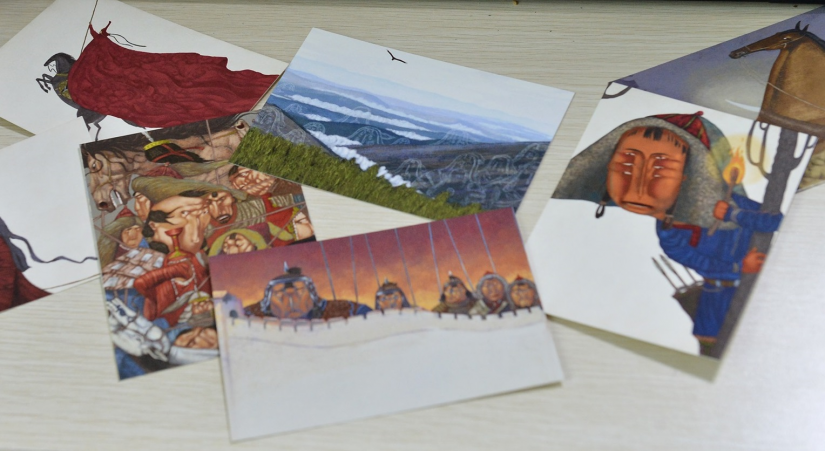
- In total, how many illustrations did you draw for the Secret History of Mongols book?
- The book has over 60 illustrations that vary in sizes. Personally, I believe that there is no need to depict the book’s text in the form of pictures. Thus, it is important for the illustrator to depict the general theme, rather than simple actions. For children, reading about the events and seeing illustrations about the exact same thing is no better than memorizing the multiplication table for them. Instead, they should be provided with an illustration that allows them to further imagine the events. That is how their imagination and creativity will develop.
- What was the main reason to adapt the Secret History of Mongols for children?
- It would be an entirely different case for libraries and archives that are intended to be used to preserve and study the works. But for publishing houses and artists in the literary field, I believe the works should be “renewed” as time goes. This way, it becomes easier for children and youth to acquire a good understanding, alongside piquing their interest in reading the original source material. Our heritage has a lot of difficult words and phrases that were suitable during the specific time but no longer comprehensible for us in the modern day as well as various issues that conflict with our current moral values.
- How were these issues resolved in the newly published Secret History of Mongols?
- The original source material, ‘The Secret History of Mongols’, is given as homework for children and youth to study nowadays. They are not able to properly comprehend the text despite reading it. Moreover, because of this situation, the most important documentation of our history has been reduced to merely something you use to get grades from the teacher—when the values and the hidden meaning behind the events of the book are much more important. This “hidden meaning”, the way of living and people’s way of communication at the time as well as unique features of our tradition and heritage can be clearly seen from the new, adapted version. We made the book to help children understand the values depicted in the book rather than to have the work be memorized word by word.
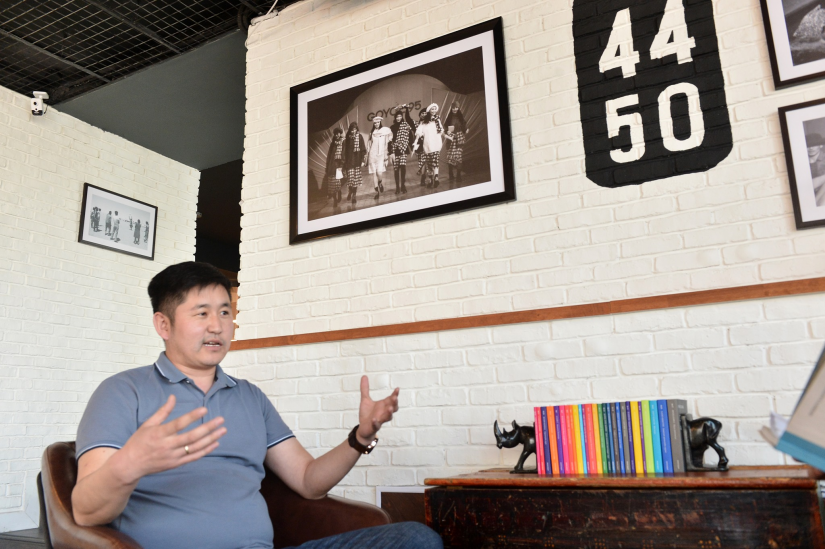
- I noticed that the book had cut out the parts with wars and conflicts, yet still included the names of the events as the book is made simpler for children. Could you tell us more about this?
- For instance, we learn about oaths, deception, and true friendship from the Secret History of Mongols. There are also many other moral values that are reflected in the work. Thus, rather than mentioning all the fights and conflicts, we aimed to show how Chinggis Khaan created as well as destroyed all this through the views, morals and values that he had.
- Did you have your children read the newly published book?
- I had my daughter read the main text when I first began to draw illustrations for the book. My daughter is now 13 years old. At the time, we had to go through a lot for her to understand the content as well as for me to help her. Because I am involved in the sector, she has really taken a liking to reading. Whenever she has free time, I would often find her sitting somewhere reading a book. But with the Secret History of Mongols, it was quite difficult for her—she would often have questions regarding the words and phrases used in the book.
When I had her read the new adapted version, she even said, “Oh, so this is how it was. Why did it have to be so difficult?”
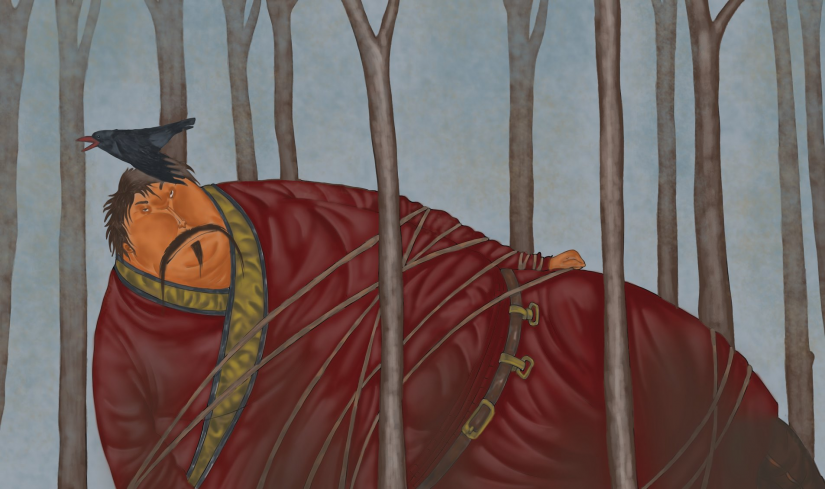
- How was the content of the book developed?
-The text for the book was written by Editor-in-chief of ‘Jangar’ editorial B.Battsetseg. Honored Cultural Figure L.Dashnyam worked as the general advisor, with S.Uuganbayar as the advisor for the historical side. Furthermore, as composition is crucial in literary works, Director of ‘Monsudar’ publishing house R.Enkhbat also worked as an advisor alongside having many authors read the work to hear what they think about it.
- What is Jangar editorial’s current policy on publishing children’s books?
- So far, Jangar editorial has published about 300 to 400 children’s books. This includes many great works written throughout the world that were published after acquiring the official rights, including books that have been previously published by famous publishing houses such as ‘DK’ and ‘Bloomsbury’. Aside from this, we are also creating our own content. We have published ‘365 nights’ and ‘365 days’ for example. There are also children’s picture books with Mongolian folktales. We plan to further diversify the types of books we publish with the addition of coloring books that help children develop their cognitive skills as well as creativity.

 Ulaanbaatar
Ulaanbaatar













